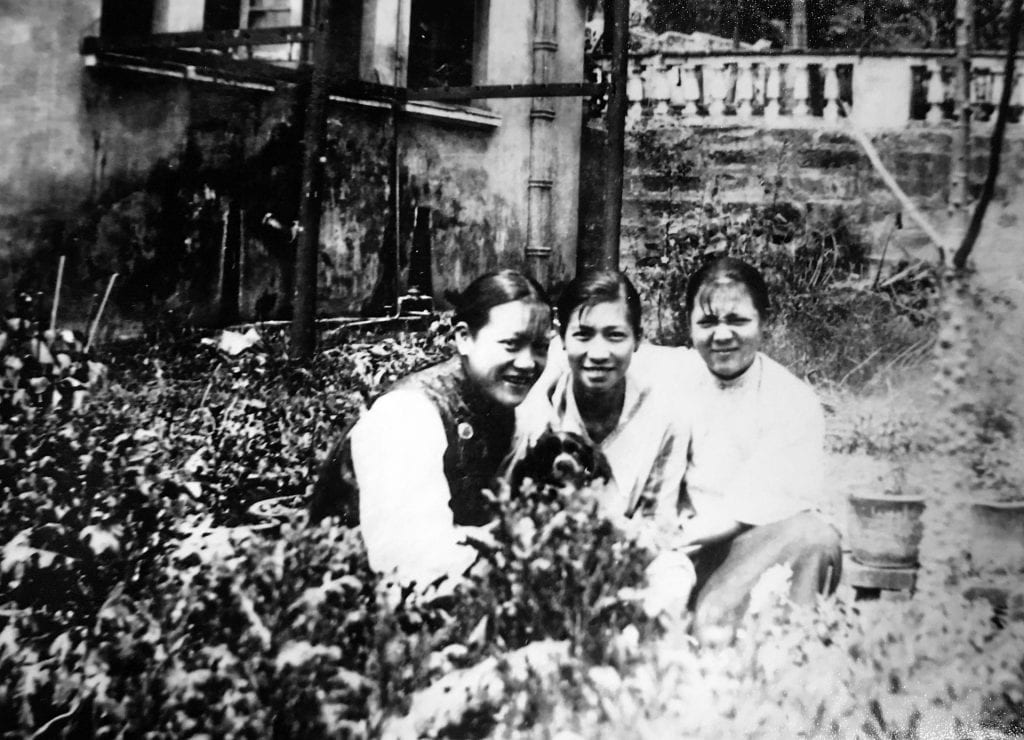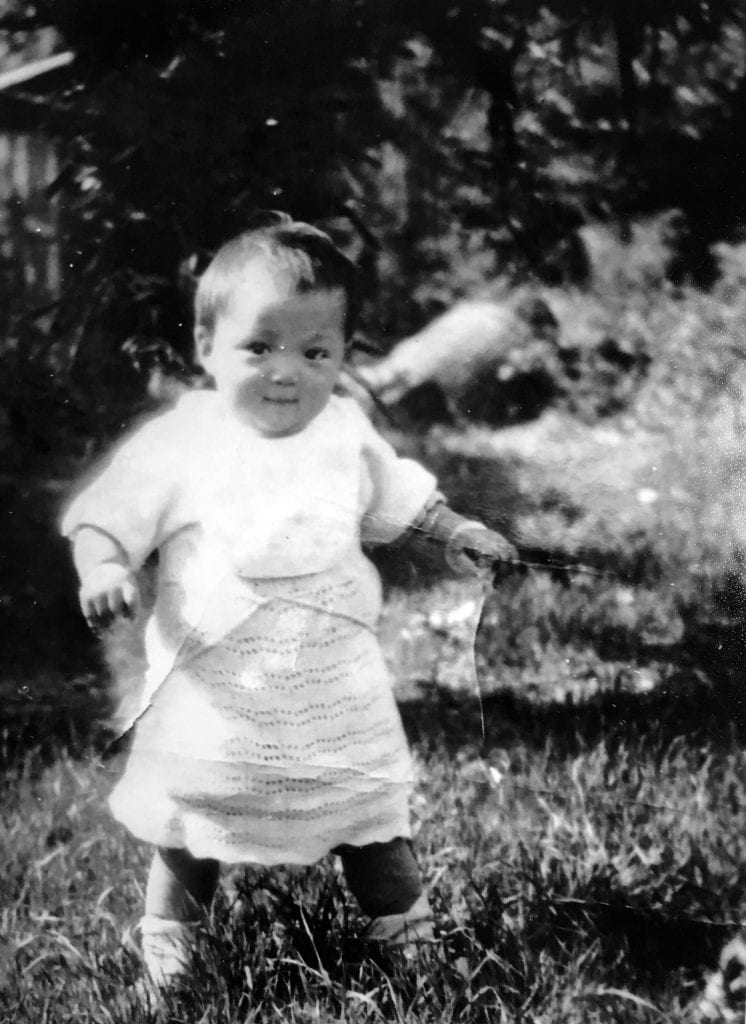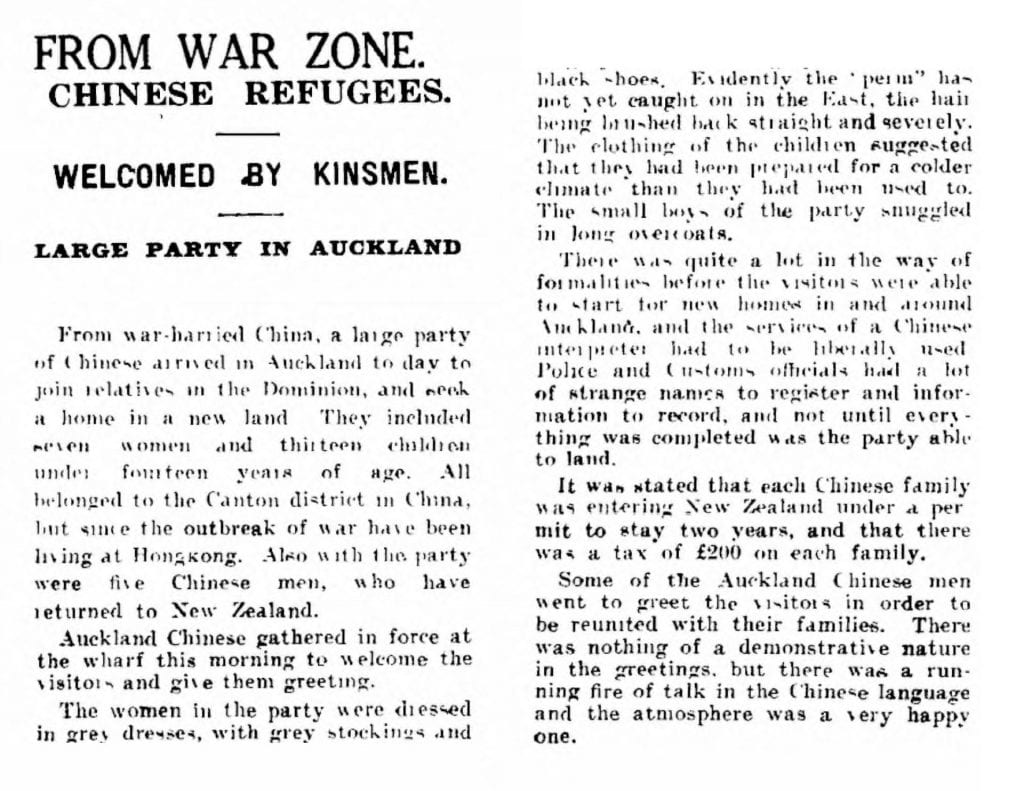Part Two
Auckland’s Chinese: Home, Youth and Joy in Turbulence
by Hanna Lu*
you have to understand,
that no one puts their children in a boat
unless the water is safer than the land
…
no one leaves home until home is a sweaty voice in your ear
saying-
leave,
run away from me now
i don’t know what i’ve become
but i know that anywhere
is safer than here
– warsan shire[1]
To live and die in the same place in the age of wanderlust is to incite pity from those who have only ever seen travel as a voluntary adventure. It’s an opportunity for growth and for excitement — but always with the knowledge that home is there, waiting patiently, for the traveller to come home to. For migrants, things are different.
The Auckland Chinese people in the interviews that form the basis of this project all come from the same approximate area around Guangzhou. This is not a coincidence — southern China in the latter half of the nineteenth century saw a number of conditions that pushed its residents to look towards the seas. Its ports were forced open to the West, farmers were hit hard by ‘drought, floods and famine’, and everyone was affected by political and economic turmoil.[2] People started to drift out, and when the Dunedin Chamber of Commerce recruited Chinese workers for Otago’s goldfields in the 1860s, the ones who could take up the offer did so.[3] Some, passing through Auckland on the way down, decided to stay. Others moved up later, while the rest, hearing that it was a good place, came here directly.
The New Zealand they came to was made up primarily of Māori and European settlers, with a British legislature that met the growing numbers of Chinese arrivals with apprehension. An 1871 Select Committee of Inquiry into the Chinese Question found no grounds for exclusion, but the idea of Chinese people remained a political issue.[4] The worst of the anti-Chinese legislation was introduced in the next forty years, and it included: the 1881 restriction of one Chinese passenger to every ten tonnes of ship cargo (raised to one hundred in 1888 and two hundred in 1896), a ten pounds poll tax (raised to one hundred pounds in 1896), the abolishment of naturalisation fees for all except Chinese people in 1892, their exclusion from old age pensions in 1898, the 1901 Opium Prohibition Act that gave police the right to enter Chinese homes without a search warrant, and the total cessation of naturalisation for Chinese people in 1908.
During World War One, only New Zealand-born Chinese residents were eligible for conscription, while any ‘aliens’ were prevented from joining the New Zealand Armed Forces at all.[5] After the war, various associations and trade unions suffering from post-war depression seized upon this perceived lack of Chinese participation in their campaigning, urging the Prime Minister to do something about “cheap Asiatic labour” and protect “the physical vigour of the [white] race”. “We fought,” stated the Returned Servicemen’s Association, “not for the Chinese but for a White New Zealand”.[6] In 1920, following the model of the 1901 White Australia policy, New Zealand amended its Immigration Restriction Act to allow free entry only to persons of British and Irish descent. Everyone else needed to apply for a permit, the granting of which was subject to the discretion of the issuing body. Notably, no reason needed to be given for rejections.[7]
In the oral history, the socio-political and structural incidences of racism were downplayed by the interviewees as little more than an “annoyance” for their parents and grandparents to bear.[8] Perhaps this can be explained by the fact that they were still so few in number. They had faced this treatment since the beginning. There wasn’t much they could do, other than support one another — with the poll tax, the elderly care that the state didn’t provide, and protection from raids as in the case of Reverend Chau, who would drag Grey Street residents up to his church when he knew the police were due — because even with these conditions, Auckland was where they wanted to be.[9] But one would imagine that it is hard to feel at home in a place that doesn’t want you, and through those years there is a sense of fragmentation within the community. Travel was a constant: visiting friends, family, and wives who had to remain behind in China— but that all changed in the late 1930s.
Grace Gee: I’m lucky because my Dad and uncle, they lived in Guangzhouxi, and more modern countries, so therefore, what happened? Oh, then we were, you see the, uh was in China, and then bombing, because the Japanese bombing Guangzhouxi and all that, we went to the country, and up and down here and there, because uh, so bad, we went to the country, and we said, we can’t go into school if we stay in the country, so therefore, and then we came back, after, you know, two or three years, in the country. Then, after that, all of a sudden we said, we go back to the city, Guangzhouxi, and that moment, while we get the testing, you know all the, bombing, terrible, you know, very, we have to run. And then, the Japanese were bombing all the time then. And then we stop from there on. And then we were a bit late to go back to New Zealand, so then we went to one of the areas, I have to think about where to, we stopped in one of the country, we can’t go back to Hong Kong, because they already closed the door, English, English taking—looking after Hong Kong.
Bruce Ah Chee: English—
Grace: Yeah. So because the Japanese bombing, they closed the door in Hong Kong. So we can’t go straight there. We had to go to the country, somewhere in—
Bruce: Macau.
Grace: No, before that. Before that, then, Nellie, been born in the country.
Lorna: Oh, is she?
Grace: Yeah. So then my auntie, and mother, and uncle—
Lorna: Wow, must have been hard for your mother, being pregnant and what.
Grace: Yeah, one part, we went to that, from Guangzhou, and then [Cantonese] they stopped there, then we say, the boats have stopped there. Then, the whole lot of us, what are we going to do, sitting at the wharf? Then, auntie Rose, she being the oldest, had more education and all that, she leading, Mum was expecting, and auntie expecting, then the worst part was, one of the little girl— that was later on. So anyway, where we can go? W-We can’t go anywhere now.[10]
The Second Sino-Japanese War moved into the Chinese Aucklanders’ home province in October 1938. Grace Ah Chee walked with her mother, brother, her auntie and her auntie’s newborn baby to Hong Kong.[11] Mavis Lowe got there on a little canoe with half a dozen other people, travelling away from the sound of the bombs.[12] Willie Wong saw planes dropping these bombs on railway lines connecting the villages, and walked to Shangdong before taking a passenger boat.[13] The striking thing about these sections of audio is the change in coherence: the English is perfect, but the sentences become a bit jumbled, a bit more staccato. Pressing for more information results in the same thing being repeated, as if they would like the matter to be closed and for the interview to move on. At the same time, the speed of speech changes: less measured, more rushed, in a way that suggests that they could, given space, speak about the topic for a lot longer. Such is the paradoxical nature of traumatic memories — especially, as Mavis is careful to remind us, memories from so long ago. She was only a child then, “being taken everywhere”, not taking much notice of what she was doing but remembering snippets: getting on the boat, giving her thumbprint. She felt safe, partly because she’d heard that the Japanese were kind to children, mostly because she was with her granny.[14] It seems that more often than not, it was the women of the family who travelled with their children, and with their more varied social connections and greater agency were the first to realise the need to escape from China — that is the case with Willie, whose mother left with him earlier than everyone else.[15]
Helping women and children as refugees from China gave New Zealand a chance to flex its humanitarian muscles and marked a shift in popular reporting to a much more sympathetic tone. In 1939, a temporary permit was introduced to allow entry to the wives and children of permanent Chinese residents, on the conditions that they pay two hundred pounds for maintenance, and deposit five hundred pounds bond to guarantee that any children would leave with their mothers at the end of their two-year stay.[16] Two hundred and forty-nine women and two hundred and forty-four children entered New Zealand through this process, and as the Auckland Star reported, “the atmosphere was a very happy one”.[17]
World War Two officially began that same year. The interviewees all “had a hard time” — serving overseas or training for the home guard, making do with rationed gas, sitting on apple boxes lined with newspaper in lieu of chairs.[18] Market gardeners were tasked with supplying thousands of cases of produce (not soaked in water and with the extra leaves cut off) for the troops.[19] The army also needed trucks, commandeering them from families who had to “get a rubbish one and make do”; Joana F. Sang’s father was left with “a real rattle-trap” of a car with a half door that she had to vault over on her way in.[20] These were also the years of adolescence for many from this group, and as difficult as it was, there is little sense from them of the drab grey tedium of war. David V. Wong Hop describes the years as “turbulent and exciting” — if audio could have colour then these clips would be saturated with a clean golden light.[21]
Joana: One of the joys of [Uncle Charlie] doing all these, during the war, doing all this laundry for all the American servicepeople, they would ply him, give him all these, chewing-gum, sweets, candies, and during the war, we were on severe rationing — I mean, sugar, butter, everything, meat, eggs, everything was rationed. So Margaret and I, once we were old enough to go down by tram, we used to delight in visiting Uncle Charlie and getting a few goodies, because it was so rare, it was beautiful, we thought he was almost like a fairy godmother.[22]
They remember the movies, visiting uncle Charlie’s laundry and leaving with candy (given to him as tokens of appreciation from the American contingent), and visiting the first hamburger bar on Great South Road that opened in the 1940s.[23] “I’ll never forget it,” Thomas Wong Doo III says, going on to describe the hamburger-making process in intricate detail. “If you took your girlfriend out, you would have a hamburger”.[24]
Fighting side by side with China and seeing the participation of Chinese New Zealanders at home in the war put earlier discriminatory policies in a distasteful light. The poll tax and tonnage restrictions were officially abolished in 1944, the war ended in 1945, and in 1947 — thanks in part to the campaigning of Reverend Chau — permanent residence was finally granted to the women and children who came as war refugees in 1939.[25] It was the start of a recognition that since the first Chinese people had arrived decades earlier, among the turbulence, they had survived, made a life, and embraced Auckland as their home.
* Hanna was one of four students awarded a 2020 Summer Scholarship out of a highly competitive field. Her project focused on a group of Chinese families in Auckland in the twentieth century and she describes this topic as a timely one. As we grapple with the urgent need for ethnic diversity in history, this research highlights moments of grace in Auckland’s past, and suggests a reorientation in the way we write about ethnicity and what Auckland has been to its people.
[1] Warsan Shire, “Home,” Genius, accessed January 5 2020, https://genius.com/Warsan-shire-home-annotated.
[2] Joanna Boileau, Starch Work Done by Experts: Chinese Laundries in Aotearoa New Zealand (Wellington: Chinese Poll Tax Heritage Trust, 2019), 16-7.
[3] Manying Ip, “Chinese – The first immigrants,” Te Ara – the Encyclopedia of New Zealand, published February 8 2005, updated March 1 2015, https://teara.govt.nz/en/chinese/page-2.
[4] Bickleen Fong, The Chinese in New Zealand: a study in assimilation (Hong Kong: Hong Kong University Press, 1959), 18.
[5] Defence Act 1909; Military Service Act 1916.
[6] Manying Ip, “Chinese New Zealanders: Old Settlers and New Immigrants,” in Immigration and national identity in New Zealand: one people, two peoples, many peoples?, ed. Stuart William Greif (Palmerston North: Dunmore Press, 1995), 175-6.
[7] Ibid, 173.
[8] Barry Wah-Lee, interview by Sue Gee, Chinese New Zealand Oral History Foundation 1st Project: 21 Voices, June 4, 2006, audio.
[9] Thomas Wong Doo III, interview by Lorna Wong, Chinese New Zealand Oral History Foundation 2nd Project, September 1, 2011, audio; Wah Ying Chau (Chong), interview by Charles Chan, Chinese New Zealand Oral History Foundation 4th Project, July 21, 2015, audio.
[10] Bruce Ah Chee and Grace Ah Chee, interview by David Wong and Lorna Wong, Chinese New Zealand Oral History Foundation 1st Project: 21 Voices, October 6, 2009, audio.
[11] Ibid.
[12] Mavis Lowe (née Ah Chee), interview by David Wong, Chinese New Zealand Oral History Foundation 1st Project: 21 Voices, July 15, 2010, audio.
[13] Willie Wong and Elsie Wong, interview by David Wong and Lorna Wong, Chinese New Zealand Oral History Foundation 1st Project: 21 Voices, August 20, 2009, and September 6, 2009, audio.
[14] Mavis Lowe, interview.
[15] Willie Wong and Elsie Wong, interview.
[16] Bickleen Fong, The Chinese in New Zealand: a study in assimilation (Hong Kong: Hong Kong University Press, 1959), 32.
[17] “From War Zone.” Auckland Star, October 30, 1939.
[18] Ella Hoy Fong (née Wong), interview by David Wong and Lorna Wong, Chinese New Zealand Oral History Foundation 1st Project: 21 Voices, July 2, 2009, audio; David V Wong Hop, interview by Edwin Welch, Chinese New Zealand Oral History Foundation 2nd Project, August 22, 2011, audio.
[19] Ella Hoy Fong, interview; Willie Wong and Elsie Wong, interview.
[20] Willie Wong and Elsie Wong, interview; Joana F Sang (née Wong Hop), interview by Lorna Wong, Chinese New Zealand Oral History Foundation 2nd Project, January 19, 2012, audio.
[21] David V Wong Hop, interview.
[22] Joana F Sang, interview.
[23] Joana F Sang, interview; Thomas Wong Doo III, interview.
[24] Thomas Wong Doo III, interview.
[25] Wah Ying Chau, interview; Manying Ip, Home away from home: life stories of Chinese women in New Zealand (Auckland: New Women’s Press, 1990), 21.



